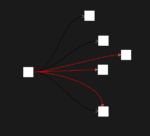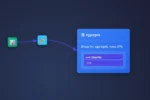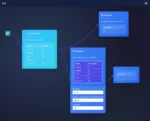
by tyler garrett | May 17, 2025 | Data Processing
The world of data is rapidly expanding, and with this exponential growth comes an increased need for effective data validation. Organizations are no longer content with mere collection of data; they demand accuracy, reliability, and actionable insights derived from their datasets. Multi-stage data validation is the linchpin that ensures data integrity, enabling decision-makers across industries to trust their analytics output and drive data-driven innovation. However, achieving truly validated data throughout the data lifecycle—from ingestion to consumption—is often complex and nuanced. As technical strategists specializing in data engineering and analytics solutions, we have identified critical factors and steps that every organization should implement to guarantee the accuracy of data processing, allow better strategic insights, and bolster overall confidence in their data-driven strategies.
Understanding the Critical Importance of Data Validation
In today’s business environment, decision-making is often shaped by the availability and integrity of data. Poor data quality negatively impacts strategic direction, leading to errors, broken business processes, or incorrect market insights. Organizations investing resources in collecting and storing data sometimes overlook how critical it is to validate and verify this data across every stage—from initial ingestion to final consumption or output. Robust data validation contributes to eliminating these pitfalls, ensuring the delivered analytics and insights stand up to scrutiny and remain actionable for business users.
Data validation is more than a technical exercise; it is strategically paramount for delivering long-term and consistent value. For example, companies that adopted rigorous validation practices for their data pipelines experienced increased reliability in reporting and analytics outputs. Conversely, neglecting rigorous validation resulted in biased analytics, unreliable machine learning models, and widespread misinformation within the organization.
At the heart of successful data validation is the proper utilization of modern technologies like JavaScript frameworks, data engineering practices, and intelligent analytics tools. For more clarifying insights about JavaScript and its hidden gems, we encourage you to explore our latest article, “15 Lesser-Known Facts about JavaScript“.
The Lifecycle of Multi-Stage Data Validation
Data Ingestion: Capturing Quality at the Source
Data ingestion is the first critical juncture for validating data accuracy. At this stage, businesses must establish rules to enforce integrity from the outset, as early detection prevents more significant downstream issues. In practical terms, ingestion-level validation typically involves checks for basic data schema conformity, datatype consistency, null values, and proper formatting. Implementing robust validations early in ingestion ensures compliance with predefined standards and reduces costly corrections in later stages.
As data strategists, our team often utilizes advanced platforms such as Node.js for processing incoming data in real-time with minimal latency. Engaging reliable Node.js consulting services can significantly enhance your ingestion validation process, maximizing both efficiency and accuracy at this initial crucial point.
A comprehensive ingestion validation strategy also includes automated quality gates and alerts designed to flag inconsistencies, immediately capturing irregularities to trigger corrective actions. These proactive machine-driven validations solidify quality foundations, paving the way for more sophisticated data analytics down the line.
Transformation and Integration Validation: Maintaining Integrity Throughout
Once past ingestion, data rarely remains stagnant. Data integration and transformation play pivotal roles as data moves across modern cloud-native infrastructure. At these points, efficient validation processes guarantee optimal aggregation, cleansing, deduplication, and enrichment, creating consistent data structures. Comprehensive transformation validation fortifies the data’s reliability, empowering stakeholders with assured analytics.
Data transformation validation usually entails detailed rule engines and business logic execution that validate outputs against expected results. Automated scripts and frameworks are often leveraged here to achieve consistent validation at scale. With the proliferation of artificial intelligence and machine learning, data engineers play an increasingly critical role in ensuring these transformations occur accurately and efficiently. They are now central actors, designing integration layers that account for validation practices embedded into the execution workflow, ensuring datasets maintain integrity and authenticity.
Integration validation must anticipate potential defects in data exchanges between disparate systems. This involves extensive testing and validations of APIs, service layers, and data transfer processes to verify consistent communication and error handling. By focusing on integration validation, organizations establish trust in not just single datasets but also relationships across diverse data sets and processes.
Data Storage and Warehousing Validation: Confidence in Your Centralized Data Hub
Centralized storage, such as data lakes or warehouses, is the strategic information nerve center of many modern enterprises. Confidence in analytics depends primarily on the fulfillment of data quality criteria at this critical stage. Data warehousing validation encompasses holistic quality strategies tackling storage optimization, indexing validation, consistency checks, and scalable verification of historical and real-time data.
Validation at this phase includes assessing storage environments for immutable data structures, auditing performance metrics, and accurately tracking data lineage. This ensures consistency and efficiency across intricate analytical workflows. Additionally, adopting modern data architecture practices is critical. If you’re interested in understanding the significance of immutability in data processing, we tackle the topic comprehensively in our article “Immutable Data Architectures: Benefits and Implementation Patterns“.
Data consultancy firms like ours encourage adopting analytics-ready structures and performing systematic quality checks within warehouses before consumption phases. This strategic approach boosts the overall analytics validation, enhances stability, and builds a robust foundation for future scalability.
Consumption and Analytics Validation: Delivering Trusted Insights
The consumption layer represents the final bridge between validated data delivery and insightful decision-making. At this juncture, analysts, stakeholders, and decision-makers extract strategic insights and recommendations, making it vital that outputs remain accurate and reliable. Often, validation at the consumption stage integrates dashboards, data visualization tools, and business intelligence (BI) solutions.
Consumption validation involves meticulous user acceptance testing (UAT) protocols, accuracy-checking frameworks for operational dashboards, and continuously automated rules governing business-critical analytics. Power BI, for instance, is widely utilized across industries to manage this crucial last-mile validation. We delve deeper into managing Power BI datasets and best practices relative to data ingestion methodologies in our guide on “Import vs. Direct Query in Power BI“.
Additionally, integrating comprehensive feedback and iterative validations drives constant improvement and accuracy enhancements. Decision-making driven by validated insights ensures strategic efforts and investments are allocated effectively, reducing risk and maximizing outcomes across organizational dashboards.
Strategically Leveraging Multi-Stage Validation Partners
Effective multi-stage data validation requires considerable technical expertise, forward-thinking innovation, and a precise understanding of complex data environments. Organizations navigating complex validations benefit immensely from expert strategic data consulting services tailored specifically toward evolving data challenges and best practices implementation.
Partnering with smaller, nimble teams offers various advantages, including agility, specialized subject matter expertise, and rapid execution. For more details, see our insights into “Working with a Small Data Consultancy: The Advantages.” Moreover, we often notice repetitive errors or pitfalls in businesses falling short on data validation efforts, especially startups. To gain insights into avoiding these common mistakes, we recommend our practical breakdown: “Top 5 Data Mistakes Found in Startups this Year“. Leveraging experienced consulting partners further safeguards strategic transformations, freeing leaders and resources to focus confidently on driving growth and innovation using validated data.
Conclusion: The Multi-Stage Validation Framework
Ensuring trustworthy data cannot be left to chance. In an increasingly data-driven world, multi-stage validation—from ingestion through transformation, storage, and finally consumption—is essential for delivering valuable, reliable, and actionable insights to decision-makers. As we have demonstrated, by carefully implementing validation strategies at every decision point, your organization can significantly enhance strategic outcomes, increase stakeholder confidence, and secure a leading position within today’s competitive data analytics ecosystem.
Ready to safeguard your data and maximize strategic analytics opportunities? Embrace rigorous multi-stage data validation and accelerate your organization’s data-driven transformation.

by tyler garrett | May 17, 2025 | Data Processing
In today’s fast-paced business landscape, effective decision-making is heavily reliant on real-time analytics and accurate data insights. However, an often overlooked yet critical problem faced by organizations is managing late-arriving data. Whether the delay is caused by network latency, unreliable data streams, or third-party service complications, organizations must learn how to accommodate late data effectively—without compromising the integrity of analytics and reporting. Successfully navigating this challenge distinguishes agile, data-driven organizations from their less adaptive counterparts. As technical strategists who prioritize innovative analytics solutions, our team understands that evolving your time-window analytics strategy to effectively handle late-arriving data can be the defining factor in gaining a competitive advantage. In this article, we will unravel practical insights into handling latency issues, confidently guiding your enterprise towards data-driven excellence and empowering you to unlock the true potential of your analytics.
Understanding the Impacts of Late-Arriving Data
Late-arriving data refers to data points or events that arrive after their designated reporting window has already closed. Organizations that leverage real-time or near-real-time analytics frequently experience scenarios where certain critical data does not make it to analytical systems within anticipated timelines. Late-arriving data can significantly impact business forecasting, in-depth analysis, application monitoring, and decision making. For example, an e-commerce platform relying on real-time transactional analytics may inaccurately represent inventory statuses or consumer behaviors, leading to lost sales opportunities or supply chain inefficiencies.
When organizations neglect to incorporate late-arriving data effectively, decisions are based on incomplete or misleading insights. In markets with tight margins and volatile consumer trends, this can undermine profitability and operational efficiency. For instance, precise forecasting—such as described in our guide to accurate demand prediction—becomes difficult without a robust strategy for handling delayed information.
Moreover, user adoption of analytical tools may decrease if business users lose trust in data quality due to inaccuracies stemming from late-arriving information. Users will quickly grow frustrated with dashboards displaying inconsistent or erroneous figures, adversely impacting your overall interactive dashboard strategies. Gaining clear visibility into the impacts of late-arriving data is a crucial first step toward mitigating these issues and building resilient analytics solutions.
Strategies for Managing Late-Arriving Data Effectively
Establishing Flexible Time Windows for Data Processing
A pragmatic approach to managing late-arriving data involves implementing flexible rather than rigid time-based analytical windows. By providing a buffer window or “grace period,” organizations can capture data points that arrive shortly after the set analytic window closes. For example, if your company traditionally evaluates sales data on an hourly basis, adding a 10-minute grace period can help encompass delayed transactions that significantly affect metrics and decision-making accuracy.
Flexible time windows enable data pipelines to process insights more accurately and can notably reduce the disruption caused by network latency and third-party data delays. Our strategic implementation of these methods for our clients highlights the importance of adaptability in managing real-time analytics challenges. Companies leveraging sophisticated tools like those described in our extensive insights on real-time analytics architecture patterns are best positioned to leverage flexible windowing effectively. By integrating these forward-looking strategies, your business enhances its decision-making capabilities and gains resilience in turbulent markets.
Incorporating Event-Time Processing and Watermarking Techniques
Another powerful method for dealing with delayed data involves adopting event-time processing coupled with watermark-based strategies. Event-time processing uses timestamps embedded within each data event to manage and sequence data correctly, regardless of when it arrives at the analytics platform. This allows applications to determine accurately when events occurred, even if the events themselves arrive late.
Watermarking complements event-time processing by signaling the system how late it should wait for delayed events before finalizing a given analytic window. Various modern solutions, such as Apache Flink and Google Dataflow, offer built-in support for event-time processing and watermarking. Our Power BI Consulting Services experts regularly guide enterprises in adopting these advanced techniques. With strategic watermarking in place, your analytics becomes more accurate, resilient, and reflective of actual business conditions, ultimately guiding more precise operational and strategic decisions.
Infrastructure Patterns to Handle Late-Arriving Data
Leveraging Non-Blocking Data Integration Patterns
When data infrastructures rely upon traditional, rigid ETL (Extract, Transform, Load) processes, arrival delays can significantly disrupt operations. Employing modern, agile data architectures capable of processing data in a non-blocking or asynchronous manner helps overcome typical challenges posed by late-arriving events. Non-blocking data patterns allow data pipelines to ingest, store, and index delayed data events independently of immediate analytic consumption.
For instance, organizations regularly utilize non-blocking data loading patterns for interactive dashboards to ensure dashboard responsiveness and continuous data flow, regardless of back-end delays or network issues. Adopting these innovative infrastructure patterns not only mitigates problems associated with late-arriving data but provides scalable analytics systems prepared for varying business conditions and growing data volumes.
Implementing a Data Lake Architecture for Enhanced Flexibility
Data lakes are central repositories designed to store structured, semi-structured, and unstructured data at any scale. As opposed to rigid data warehouses, data lakes maintain flexibility in managing diverse data types, making them particularly powerful in scenarios involving delayed or incomplete data.
By strategically planning and deploying data lake architecture, organizations can preserve valuable late-arriving data without detrimentally impacting live analytical operations. With comprehensive data-lake-based integration, enterprises reduce the risk of losing significant insights due to delays and enhance analytical visibility through more comprehensive historical data sets. Our expertise in developing flexible data architectures ensures that late-arriving data arises less as an obstacle and more as a manageable component of advanced analytic patterns that reinforce business continuity and foster sustainable competitive advantages over peers.
Continuously Improving Analytics Through Monitoring and Feedback
An often overlooked aspect of managing late-arriving data effectively is iterative improvement based on continuous monitoring and proactive system feedback. Organizations succeeded most significantly when implementing robust monitoring practices that detect abnormal delays, alert relevant stakeholders, and trigger interventions or corrective actions promptly. Establishing clear visual monitoring dashboards highlighting data ingestion throughput and latency levels provides transparent feedback loops that facilitate swift issue resolution.
If your dashboards consistently fail to deliver accurate insights, strategies outlined in our article, “How to Fix a Failing Dashboard Strategy”, provide further methods for quick remediation. This visibility supports ongoing optimization of infrastructure and analytic processes, continuously reducing the occurrences and impacts of late-derived data issues. Using feedback loops for continual analytics improvement creates relevant, timely, and more reliable insights, underpinning organically evolving innovative analytics capabilities that amplify strategic decision-making.
Conclusion: Proactively Embracing Challenges for Innovation
Instead of perceiving late-arriving data solely as a problematic element of analytics, forward-thinking organizations proactively incorporate strategies to accommodate and leverage it for enhanced insight generation opportunities, like those demonstrated by market trend analysis for better demand forecasting or transportation data analytics. Such proactive, strategic handling of late-arriving data acts as a powerful catalyst fostering organizational agility and competitive differentiation. When effectively managed, delays transform from liabilities into powerful sources of data-driven innovation, capable of refining your organization’s analytical possibilities and strategic advantages.
Our experienced consultants continuously guide organizations to modernize analytics platforms and adopt robust approaches to tackle late-arriving data efficiently and innovatively. As your strategic partner, our expertise extends beyond technology, ensuring optimized approaches to real-time reporting and sustainable data analytic innovations designed for long-term success.

by tyler garrett | May 16, 2025 | Data Processing
In an increasingly data-driven world, harnessing massive volumes of information requires sophisticated, scalable, and resilient infrastructure. Historically, managing complex data pipelines required significant manual orchestration, lengthy development cycles, and a struggle to keep configurations robustly documented. However, Pipeline-as-Code has emerged as a groundbreaking methodology, enabling teams to programmatically define and version every aspect of their data infrastructure and workflows. By turning infrastructure into clearly defined, reproducible code, businesses can optimize for agility, governance, and operational efficiency. If your organization intends to elevate its data-driven decision-making, understanding and leveraging Pipeline-as-Code becomes pivotal to maintaining market leadership.
Why Pipeline-as-Code is Transforming Data Operations
Pipeline-as-Code revolutionizes data operations by adopting the principles and best practices of software development. Traditionally, data workflows might have involved cumbersome manual setups or scripts scattered across different platforms—making them difficult to maintain, update, or track. However, Pipeline-as-Code centralizes all definitions, making deployments fully automated, repeatable, and auditable. This structured methodology not only increases developers’ and analysts’ productivity but helps mitigate the risk of costly human errors in data-intensive environments.
By relying on historical version control tools like Git combined with familiar CI/CD workflows, Pipeline-as-Code provides teams a consistent, repeatable method for updating, deploying, and validating data transformations and analytics flows. Changes are documented naturally as part of the regular software development lifecycle, significantly enhancing traceability, auditability, and troubleshooting capabilities.
Pipeline-as-Code also supports greater collaboration across departments. Analysts, data engineers, and software developers can review, track, and approve pipeline updates together, promoting a unified understanding of infrastructure and processes. Businesses that embrace this method can witness substantial gains in speed, transparency, compliance, and ultimately, higher return-on-investment from their data analytics endeavors.
The Essentials of Pipeline-as-Code: Modern Techniques and Technologies
Infrastructure Declarative Frameworks
At its core, Pipeline-as-Code depends on declarative infrastructure-as-code frameworks like Terraform, Kubernetes configuration files, and CloudFormation. These technologies allow organizations to define the exact state their infrastructure needs to reach, rather than scripting manual procedural steps. Using declarative infrastructure, your data team can automate the deployment and management of data warehousing infrastructures seamlessly. Effective implementation of these infrastructures plays a critical role in successfully managing analytics workloads, a topic discussed extensively across resources like our data warehousing consulting services page.
Pipeline orchestration solutions like Apache Airflow or Dagster enable data engineers to programmatically define complex pipeline dependency graphs, scheduling requirements, and error-handling procedures. Organizations can version-control their pipelines, significantly facilitating iterative improvements and collaboration on data transformations. Such automation not only accelerates delivery but also improves accuracy and reliability of analytics reports and intelligence insights across an enterprise.
Embracing Containerized Data Pipelines
Container technologies such as Docker dramatically simplify developing, packaging, and maintaining pipeline environments. Leveraging containers empowers data teams to quickly launch tasks within consistently reproducible environments, eliminating drift between stages from dev to production. When combined with orchestrators like Kubernetes or cloud-managed container services, these containerized pipelines scale efficiently, dynamically optimize resource utilization, and simplify testing and deployment, thus enhancing the organization’s agility in addressing rapidly evolving analytics requirements.
Leveraging Advanced Analytics with Pipeline-as-Code
Optimizing Data Access and Analytics Efficiency
Implementing Pipeline-as-Code facilitates sophisticated data access patterns. Utilizing fast indexing solutions like the ones detailed in our blog “Enhancing Data Retrieval with Indexing in SQL” and “Spatio-temporal Indexing Structures for Location Intelligence“, data engineers can dramatically improve the responsiveness and efficiency of analytical queries. Proper indexing combined with Pipeline-as-Code means consistently deploying optimized data schemas designed for maximum querying performance.
Innovative analytical approaches like predictive modeling can also leverage Pipeline-as-Code as demonstrated in “Mastering Demand Forecasting with Predictive Analytics“. Pipelines codified with machine learning libraries and models enable your business to continuously evaluate predictions, automatically retrain models with new datasets, and effortlessly deploy analytics-driven insights that directly influence operational decisions.
Real-time Analytics and Telemetry Integration
Data analytics is no longer confined strictly to batch processing, as organizations increasingly demand near-real-time visibility into operational intelligence. Utilizing telemetry patterns within microservice architectures as discussed in the blog “Microservice Telemetry Aggregation Patterns for Real-time Insights“, Pipeline-as-Code becomes indispensable. Integrating real-time analytics streams within coded pipelines allows businesses to quickly identify anomalies, make proactive adjustments, and respond to emerging conditions in dynamic marketplace environments.
Improving Governance and Observability through Pipeline-as-Code
Visualizing Data Lineage for Enhanced Governance
Pipeline-as-Code goes beyond merely deploying data workflows: it integrates seamlessly with metadata management, enabling businesses to track data flow comprehensively. Tools and techniques from the article “Graph-based Data Lineage Visualization” help organizations trace data provenance clearly—from source ingestion to warehousing, visualization, and eventual archiving.
Effective data governance relies heavily on accurate lineage information. Pipeline-as-Code allows data teams to embed lineage tracking directly within code-based pipeline frameworks. It becomes easier to diagnose data quality issues, validate compliance with industry regulations, and proactively communicate organizational insights to key stakeholders, establishing trust in your data-driven strategies.
Optimization Techniques for Data Pipelines
Using advanced optimization approaches such as the Bloom filter discussed in “Bloom Filter Applications for Data Pipeline Optimization“, organizations can greatly improve pipeline fidelity. Such optimized and tested filters ensure only pertinent data passes efficiently into analytic workflows, reducing storage and processing overheads and significantly enhancing pipeline flow management clarity.
Implementing Pipeline-as-Code in Your Organization
Aligning Technology and Strategy
When implementing Pipeline-as-Code, it’s vital to align technical adoption with broader organizational strategies. Decision-makers must grasp not only the technical advantages—scalability, maintainability, reliability—but also how these translate into business outcomes. Real-world case studies, such as “Using Data Analytics to Improve Transportation in Austin, Texas“, showcase the tangible community benefits achieved through strategic data analytics and underscore Pipeline-as-Code’s potential value.
Promoting strategic professional networking within the data science community—highlighted in “The Art of Networking with Data Science Professionals“—provides frameworks for gaining implementation insights from direct industry experience. Leveraging the right partnerships and experience significantly improves the chance of success when adopting Pipeline-as-Code.
Realizing Pipeline-as-Code Benefits Step-by-Step
Adopting Pipeline-as-Code should commence with clearly defined pilot projects showcasing quick wins to illustrate value early in deployment. For example, simple data movements like export scripts (Send Instagram Data to Google Big Query using Node.js) can serve as proof-of-concept milestones demonstrating Pipeline-as-Code viability quickly and effectively, validating senior-level confidence gradually building towards complete pipeline automation.
Ultimately, Pipeline-as-Code implementation requires executive sponsorship and effective stakeholder engagement. With the right preparation, strategy, tools, and partnerships, your organization can realize immense benefits—including improved reliability of insights, enhanced observability, higher data governance confidence, and faster innovation.

by tyler garrett | May 16, 2025 | Data Processing
In today’s data-driven world, it’s essential for businesses to swiftly leverage information as data continues to stream in rapidly and relentlessly. Streaming analytics is not merely an advantage but a fundamental aspect of staying agile and competitive. However, to efficiently harness data streams for actionable insights, companies require robust strategies around processing windows—time boundaries that determine how incoming data is aggregated and interpreted in real-time.
As market volatility increases and consumer expectations rise, implementing effective windowing strategies becomes paramount. At Dev3lop, our extensive experience with data analytics and streaming technologies helps businesses precisely manage incoming data, ensuring they capitalize on timely, accurate insights. Let’s delve deeper into mastering processing window strategies—for overcoming obstacles associated with high-velocity data streams and unlocking the full potential of your analytics infrastructure.
Understanding Processing Windows in Streaming Analytics
Streaming analytics involves analyzing real-time data continuously to detect opportunities or anomalies as they happen.
A critical concept within streaming analytics is the processing window—a defined interval or time frame within which data is grouped, aggregated, and processed. Processing windows allow businesses to identify patterns, trends, and events in rapidly flowing streams, enabling effective and timely responses. Unlike traditional batch processes, streaming analytics demand accurate time-bound segmentation of data to ensure freshness and relevancy.
There are several common types of processing windows utilized in streaming analytics: tumbling, sliding, session, and event-time windows. Understanding each window type ensures efficient querying, aggregation, and monitoring processes, ultimately optimizing business outcomes. In an era where maximizing profitability through optimized inventory and real-time operational decisions hinge primarily on rapid yet accurate data processing, choosing the right window type is mission-critical. Leveraging precise processing windows enhances situational awareness, supports advanced predictive modeling, and enables dynamic actions driven by real-time intelligence.
Tumbling Windows: Clearly-defined, Non-overlapping Intervals
Tumbling windows are a straightforward and commonly utilized strategy for separating streaming data into consecutive, non-overlapping intervals of equal duration. Imagine a scenario where a retail chain uses historical transactional data to quickly aggregate sales volumes every five minutes. Tumbling windows ensure that each five-minute interval contains a unique dataset without crossing boundaries—useful for simplified analytics scenarios focused heavily on trend analysis carried out on fixed timeframes.
Implementing tumbling windows is especially beneficial when working within environments that require predictable and easily-interpretable analytics. For instance, inventory demand forecasting, resource allocation decisions, and regular KPIs updates fit comfortably within neatly delineated intervals. Proper utilization of tumbling windows also contributes substantially toward efficient storage space utilization, simplifying infrastructure requirements. Because data processed within tumbling windows does not overlap, query efficiency improves and analytical tasks are clearer and more cost-effective.
However, fixed intervals can be limiting if an organization requires real-time responsiveness and the ability to capture events or behaviors that could span different intervals. In such scenarios, evaluating alternative processing windows strategies becomes paramount.
Sliding Windows: Flexible Overlapping Frames for Enhanced Insights
Sliding windows are progressive, overlapping intervals allowing data to be continuously aggregated and analyzed, updating results frequently as new events flow into the streaming pipeline. A financial institution might use sliding windows within fraud detection scenarios—analyzing transactions in the last hour continuously updated every five minutes—to pinpoint suspicious patterns occurring over an extended period, and promptly trigger necessary interventions.
This flexibility offered by sliding windows allows businesses to respond more rapidly to changing conditions, identifying anomalies promptly and capitalizing on emerging trends as soon as they arise. Implementing sliding windows can substantially improve operational response times and decision-making agility—a critical competitive advantage in a world increasingly dominated by data-driven initiatives and aggressive business analytics.
Sliding windows provide dynamic snapshots of data that are invaluable when tracking customer behavior patterns, monitoring resource utilization in cloud environments, or optimizing inventory decisions. Strategic window management can drastically enhance your capabilities in innovating within existing legacy systems, efficiently adapting your applications to respond proactively without costly system replacements.
Session Windows: Intelligent Event-driven Periods for Customized Analysis
Session windows offer a powerful and insightful solution: dynamically grouping event streams based on defined periods of activity—or inactivity—to measure user engagement, response effectiveness, or operational efficiency. Unlike fixed tumbling or sliding windows, session windows flexibly accommodate varying session lengths determined by real events, such as a web user activity or IoT device communications.
Consider an e-commerce platform aiming to gain deeper insights into individual customer satisfaction by tracking personalized user browsing sessions. This platform might benefit greatly from building event-triggered session windows unique to each visitor. Similarly, applications measuring system downtime or determining customer demand cycles can capitalize on dynamic, activity-centric windows to generate accurate and actionable insights.
By identifying vital activity periods, session windows enable organizations to drive targeted intervention or personalized user experiences, fostering improved customer loyalty and substantial productivity gains. A correctly implemented session window strategy complements overall analytics initiatives that empower you to unlock even deeper analytical applications, such as those explored in our piece, “11 Ideas for Using Data Analytics in Austin Texas.” Thus, getting session windows right means capturing layers of hidden insights that other strategies fail to reveal.
Event-Time vs. Processing-Time Windows: An Accurate Understanding of When Data Matters
When streaming data arrives out-of-order or delayed, differentiating between event-time windows (based on the time events actually occurred) and processing-time windows (time when events arrive at the analytics platform) becomes critical. Although processing-time windows deliver simpler real-time analytics, they fail to account for out-of-order event processing, a frequent occurrence in distributed applications and IoT networks.
On the other hand, event-time windows ensure more accurate analytics by incorporating original timestamps, making them indispensable for precise calculations of retention metrics, session durations, or sensor data processing scenarios. However, managing event-time windows can introduce complexities—highlighting the importance of advanced data engineering skills and thoughtful strategic planning when building analytics platforms.
At Dev3lop, our experienced team provides sophisticated data engineering consulting services to help businesses handle these complexities effectively. We assess organizational goals and technology constraints to implement optimal windowing solutions that guarantee accurate analytics, maintaining your organization’s competitive edge.
Choosing the Right Windowing Strategy to Optimize Analytics for Your Business
When creating streaming analytics frameworks, leveraging the suitable processing window strategy makes all the difference. Selecting an appropriate windowing method largely depends on your business objectives, industry type, and specific analytics use-cases. For instance, an inventory optimization system might benefit from precise tumbling or sliding windows, whereas personalized customer experiences or user engagement might require flexible session windows.
Combining robust data engineering expertise with strategic windowing decisions provides tremendous advantages—accurate, actionable insights, minimized latency in analytics responses, and streamlined operational processes that bring measurable business growth. In the increasingly complex landscape of real-time analytics systems, we’ve seen the right strategies transform business models and customer experiences significantly.
At Dev3lop, we specialize in delivering these transformative outcomes. From overcoming operating system challenges like solving a problem resetting your PC Windows 10 safe mode during analytics support, to developing advanced software automation capabilities such as those outlined in our recent release “Canopys task scheduler,” we ensure strategic intelligence and practical implementations converge. Embrace effective windowing strategies now to empower your business well into the future.

by tyler garrett | May 16, 2025 | Data Processing
In the fast-paced world of data analytics and innovation, businesses constantly seek strategies to streamline their operations, enhance reliability, and utilize data-driven insights for decision-making. As data volumes grow exponentially, so does the complexity of managing data pipelines. A common hurdle faced by organizations lies within efficiently resolving dependencies and scheduling jobs across complex data streams. Without a robust approach to data pipeline dependency resolution and scheduling, workflows become bottlenecks instead of catalysts for growth. Fortunately, leveraging advanced strategies and technologies can transform outdated manual practices into optimized automation, unlocking transparency, accuracy, and speed. In this guide, we’ll explore key considerations and best practices for managing data pipeline dependencies and scheduling effectively, enabling your organization to scale successfully while ensuring data integrity and availability.
The Importance of Data Pipeline Dependency Management
Data pipeline dependency management deals with understanding and orchestrating interdependencies among various tasks, jobs, and processes that constitute your overall data architecture. Each step within a data pipeline usually depends upon successful execution of previous tasks, meaning any missed or delayed step can cascade into serious downstream problems.
Effective dependency management provides clear visibility into how data flows through your systems, helping detect potential points of failure early and minimizing business disruptions. Dependable pipeline management ensures that data is consistently reliable for analytics, allowing companies to make confident data-driven decisions. With well-orchestrated dependencies, businesses can avoid costly downtimes and inefficiencies that negatively impact productivity and user trust.
Moreover, clearly defined dependencies facilitate better graph-based data lineage visualization, simplifying the tracing of information through complex workflows. Visualizing the dependencies helps stakeholders quickly understand the big picture and identify the precise locations where bottlenecks or errors could occur, aiding faster troubleshooting and system optimization.
In the current competitive landscape, accurate dependency management is no longer optional—it’s essential. Companies that invest in robust dependency management solutions position themselves ahead of competitors by enhancing their data systems’ reliability, resilience, and agility, thus unleashing their complete growth potential through data analytics.
Advanced Approaches for Resolving Dependencies Across Data Pipelines
Modern data infrastructure often comprises microservices, real-time streaming platforms, batch processing tools, and cloud-based data warehouses. Such hybrid environments inherently increase the complexities associated with dependency resolution. To address these challenges, businesses need to implement advanced techniques in managing data architecture.
One successful approach involves adopting modular and decoupled data architecture patterns. A modular approach—such as those outlined in our article on data architecture patterns for microservices—provides increased flexibility by reducing tight coupling among services. When data pipelines are modularized, components can be independently developed, deployed, and scaled, each clearly delineating their own dependencies. Through modularity, teams can quickly pinpoint problems and seamlessly adjust individual pipeline segments without disrupting the entire infrastructure.
Another critical advancement is the implementation of automated dependency detection tools. Intelligent platforms utilizing machine learning algorithms can dynamically analyze workflow logs and pipeline metadata, automatically identifying and visualizing dependencies that humans might overlook. These platforms can proactively notify teams of atypical or shifting dependency patterns, mitigating unforeseen risks promptly.
Furthermore, maintaining transparency through data lineage and metadata repositories significantly simplifies dependency identification. Leveraging modern lineage tools reduces guesswork, improves accuracy, simplifies version control, and dramatically reduces the operational risk involved with pipeline management.
Effective Scheduling: Maximizing Efficiency and Reliability
Effective scheduling is intrinsic to a reliable data pipeline. It means orchestrating dependent tasks, jobs, and workloads so they run in harmony—avoiding resource contention, ensuring consistent completion times, and maximizing overall efficiency. Poor scheduling often leads to pipeline latency, delayed decisions, and reduced trust, whereas strategic scheduling amplifies responsiveness and operational agility.
To schedule effectively, consider intelligent automation that harnesses historical data to predict job completion times and to adjust timing accordingly. Scheduling solutions now incorporate sophisticated machine learning algorithms—highlighted in our article covering analytic tools and technologies—to forecast optimal schedules based on real-world pipeline performance data. Such analytics-informed scheduling proactively addresses frequent bottlenecks, ensures accurate resource allocation, and enhances pipeline reliability over time.
Moreover, event-driven pipeline scheduling empowers businesses to initiate workflows in real-time whenever specific conditions, data-ingestion, or processes occur. Unlike purely time-based scheduling that can fail to account for variable realities, event-based scheduling fosters responsiveness and increases adaptability. Organizations moving toward real-time analytics and decision-making should transition to event-driven scheduling models to align their analytics strategy seamlessly with business goals.
In this pursuit of effectiveness, scalable scheduling methods enable you to handle increased demands smoothly. Our guide on scaling data infrastructure demonstrates how thoughtfully planned and orchestrated scheduling facilitates continuous growth, reduces execution time, and supports seamless operations without compromising performance.
Security and Ethical Considerations in Pipeline Management and Scheduling
Dependency and scheduling processes within a data pipeline can inadvertently introduce vulnerabilities and ethical concerns that organizations must proactively address. Sensitive data often travels through data pipelines, which calls for stringent measures to protect against unauthorized access or malicious activities. Employing enhanced security practices—such as adopting quantum-resistant encryption—ensures confidentiality and integrity as your information moves across various stages of processing and storage.
Also, responsible and transparent data pipeline management involves recognizing and addressing potential biases embedded within data workflows. Integrating bias detection algorithms and monitoring standards—examined in our piece about ethical considerations in data analytics—helps companies proactively correct unintended biases before they propagate harmful outcomes in decision-making.
The era of privacy-preserving technologies has arrived, further highlighted by advancements like homomorphic encryption. By allowing computations on encrypted data without revealing sensitive content, organizations can operate data pipelines with greater privacy confidence. Incorporating robust privacy management into your pipeline framework communicates to stakeholders and customers alike your organization’s commitment to responsible and ethical data stewardship.
Roles and Responsibilities: Aligning Teams for Success
Understanding the distinctions between various team roles, such as data engineers and data analysts, ensures effective strategizing and management of pipeline dependencies and schedules. As we described extensively in our article highlighting the differences between data engineers and analysts, each role has distinct responsibilities and skillsets.
Typically, data engineers develop, maintain, and optimize the pipelines, ensuring smooth data flow, reliability, and system integrity. Meanwhile, data analysts consume the output of these pipelines to generate valuable insights for decision-making. Aligning these two critical roles, clarifying expectations, and improving cross-team collaboration avoids misunderstandings, minimizes errors arising from lack of clarity, and speeds project execution.
In addition, clear documentation, training programs, and role-based access controls can further support alignment among teams, ensuring everyone understands their responsibilities in resolving pipeline dependencies and managing scheduling effectively. With team roles properly defined and aligned, organizations cement the foundation for reliable, scalable, agile, and ethical pipeline operations that propel continual innovation and meaningful business outcomes.
Conclusion: Investing in Your Data Pipeline Strategy
Strategically handling data pipeline dependency resolution and scheduling is no simple feat, yet it is critical for modern organizations seeking reliable analytics, scalability, operational efficiency, and secure handling of sensitive data. To support rapid innovation and data-driven insight, companies must continuously evaluate and evolve their pipeline practices, technologies, and ethical standards.
Partnering with expert consultants and leveraging advanced analytics solutions like those offered in advanced analytics consulting services helps streamline complexity and ensures your business remains ahead of technological advances. Companies that invest thoughtfully in their data infrastructure sleep soundly knowing their pipelines are robust, secure, efficient, and adaptable to future changes, laying a strong foundation for scalable growth and sustainable success.
Tags: Data Pipeline Management, Dependency Resolution, Pipeline Scheduling, Advanced Analytics, Data Architecture, Data Infrastructure Strategy

by tyler garrett | May 16, 2025 | Data Processing
Today’s intricate data landscapes demand intelligent approaches to transform raw data into meaningful and actionable insights. As data continues to multiply rapidly, companies find themselves grappling with inefficient traditional methodologies. Enter functional programming—a paradigm that not only simplifies complex data transformations but also fortifies scalability, readability, and optimization. Forward-thinking companies increasingly adopt functional programming to execute robust data transformations that power advanced analytical capabilities—leveraging clarity, maintainability, and precision. Whether you’re leading an innovative startup or piloting digital transformation inside a legacy enterprise, harnessing functional programming paradigms can unlock substantial value from your data workflows.
Understanding Functional Programming in Data Engineering
Functional programming revolves around the concept of treating computation like mathematical functions, emphasizing immutable data structures, pure functions, and declarative approaches. Unlike traditional imperative programming, which typically involves directly manipulating the state, functional paradigms encourage developing data transformation logic through composable functions with predictable outputs and minimal side effects.
This approach is especially beneficial when managing data transformation logic in complex enterprise data environments. By eliminating mutable state, functional programming provides clearer code frameworks that allow faster iteration, easier debugging, and smoother collaboration. Development teams gain the power of concise, declarative expressions that facilitate transparent, collaborative decision-making processes and more effective data engineering strategies.
Companies dealing with extensive datasets or trying to optimize analytics and SEO performance, as discussed in our article on The Overlap between Analytics and SEO Performance, particularly benefit from this paradigm’s rigor. Utilizing functional programming enables teams to write maintainable code for demanding analytical workflows, streamlining complex transformation tasks across large-scale data initiatives.
The Advantages of Pure Functions in Data Processing
Pure functions form the core of functional programming methodologies and deliver substantial improvements in the reliability of data transformations. A pure function has two critical characteristics: it always returns the same output given identical inputs and produces no side effects in the system. Data science teams adopting pure functions ensure their transformation logic is both transparent and predictable, driving confidence among stakeholders and decision-makers alike.
In highly regulated financial or healthcare environments, employing pure functions allows leadership teams to trace transformations step-by-step easily, significantly reducing confusion or potential mistakes downstream. It’s also particularly suitable for teams needing efficient data diagnostics—a valuable capability as outlined in our insights on the different types of data analytics.
By shifting toward pure functions, data engineers and analysts eliminate common engineering pitfalls tied to mutable state, simultaneously making scaling more efficient and seamless while reducing risk. This predictability fosters confidence not just in the programming code itself but also enhances overall strategic planning and analytical initiatives leveraged throughout an organization.
Immutability Enables Agile Data Workflows
An essential tenet of functional programming is immutability—the practice of creating objects and data structures that cannot be altered after they have been initialized. Immutability encourages engineers to design data workflows explicitly and clearly, contributing significantly to agile practices within data engineering teams.
Immutable data structures simplify debugging and reduce errors by maintaining a clear state throughout each transformation stage. For teams managing complex data lakes or warehouses, immutability facilitates smoother product deployments and more agile project management across engineering departments. Conversely, organizations stuck maintaining mutable data states typically face multiple rounds of troubleshooting, dealing with messy databases and inefficient reporting software, as outlined in our analysis of how most companies incorrectly handle their data lake issues.
Incorporating immutable data structures reduces operational risk, allows data engineers to parallelize tasks effectively, and ensures that data lineage remains consistent and trustworthy. As businesses embark on ambitious digital transformation initiatives, embracing immutability in data transformation logic yields enormous strategic advantages.
Higher-Order Functions and Composable Data Transformations
Another powerful aspect of functional programming is higher-order functions—functions capable of taking other functions as arguments or returning them as output. This approach enables engineers to construct sophisticated logic by composing simple, modular, and easily adjustable data transformation functions.
Through composability, functional programming maximizes reusable engineering components, simplifying data transformation involving repeated business logic. For instance, a company optimizing logistics could adopt a composable inventory optimization strategy—something highlighted in our detailed exploration on Efficient Storage Space Utilization and Inventory Optimization methods. This also holds true for other business contexts requiring complex repetitive calculation and analytics tasks, allowing engineering and analytics teams to quickly adapt workflows to changing business requirements.
Higher-order functions streamline complex transformations that might otherwise occupy days of inefficient manual effort—often encountered when businesses rely predominantly on traditional solutions such as Excel. As we emphasized in our article If You Use Excel to Solve a Problem, You’re in a Waterfall Project, adopting appropriate functional paradigms helps organizations sidestep inefficiencies inherent in outdated data transformation workflows.
Functional Approaches for Enhanced Scalability and Performance
Implementing functional programming patterns indirectly improves performance and code efficiency. By prioritizing immutable structures, pure functions, and minimizing side effects, functional programming reduces overhead and provides fewer unforeseen interaction points. This sparks noticeable improvements in scalability and the ability to support large-scale transformation pipelines without compromising speed or responsiveness.
Organizations operating within environments characterized by vast data pipelines—such as enterprises frequently handling large inbound data streams exceeding 10 MB spreadsheets, a limitation we addressed in our article about connecting to large Google Sheets data—particularly benefit from the optimized resource management offered by functional programming. These methodologies often simplify complexity, preserving system resources and reducing latency during data-intensive transformations and analytical workloads.
Additionally, when your business considers scaling data transformation logic across multinational subsidiaries or sizable legacy systems, embracing functional patterns empowers transformation frameworks to accommodate growth effectively. Strategically investing in these robust methodologies ensures your data engineering department can meet growing enterprise data demands smoothly and capably.
Strategically Implementing Functional Programming Approaches
Adopting functional programming patterns in your enterprise involves more than mere technical decisions—it’s part of a broader effort to ensure future scalability, sustainability, and innovative capability across your analytical and data ecosystem. Organizations transitioning toward data-driven decision-making structures need processes, methodologies, and technologies capable of sustainably supporting constant change and evolution in analytics demands and technological advancement.
Partnering with experienced and skilled professionals specializing in data transformation—like our experts at Dev3lop—provides a significant strategic advantage. Our team offers a broad range of data engineering consulting services, ensuring your transformation strategy aligns efficiently with your long-term business goals and enhances your competitive positioning.
Functional programming is an essential skill your organization must embrace to innovate faster, reduce risk, unlock expert-level analytics insights, and maintain superior technical agility. As business leaders face increasingly fierce competition and technological disruptions, strategically embracing functional paradigms becomes mandatory—not just beneficial—for maintaining sustainable growth.
Conclusion: The Road Ahead for Functional Programming and Data Transformation
Cutting-edge enterprises that actively harness functional programming paradigms in their data engineering practices realize long-term benefits in agility, maintainability, transparency, and scalability. Avoiding these modern programming paradigms carries significant risks, leaving strategic decisions hindered by legacy inefficiencies.
Integrating functional programming into your organization’s data transformation workflows ultimately empowers your analytics capabilities to handle complex future challenges more resiliently. Rethinking how your organization builds data tools—from complex inventory optimizations to advanced analytics and SEO optimization—is vital to unlocking new opportunities through innovation and strategic investments.






























